About 2 years ago I was asked by Ted Matson if I had interest in taking over the John Naka, formerly Nanpukai, exhibit in Little Tokyo. It is a historic show noted by its namesake, John Naka, who is well recognized in the western bonsai world for increasing the accessibility and popularity of bonsai. Originally founded in 1959, the club was named “Seinan,” or southwest bonsai club, but later renamed as Nanpukai in 1964. The club, whose participants represented a hand-selected group of both teachers and passionate and skilled individuals, would annually exhibit trees in conjunction with JACCC’s (Japanese American Community Cultural Center) Nisei Week. I believe, omitting some years during the COVID pandemic, this exhibit has been continually run since, representing a legacy of over 60 years.
(I’ve included a sample of trees exhibited at the Naka Memorial show, that help share the story of this event. A big thanks to Kyle Hansen who volunteered this time to help take photos!)
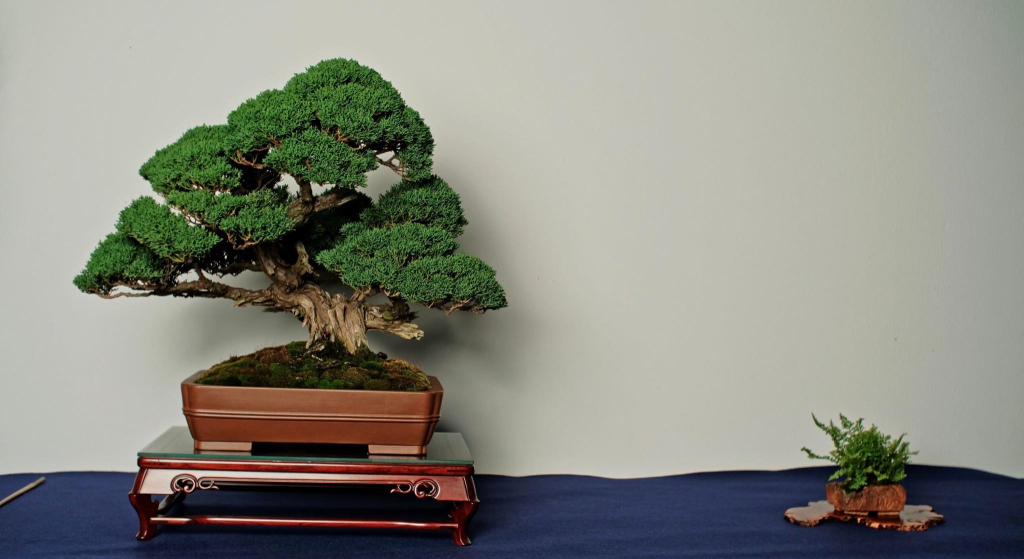
Exhibitor: Sebastian Fraye Tree: Prostrata grafted w/ juniper chinensis var. kishu
The tree was originally created by Wally Kunimoto, a legacy member and patron of the Santa Barbara Bonsai Club. It was later acquired by Sebastian, a member of the same club, who has continued its refinement to the present day. It’s an old elegant tree that represents the intergenerational hand off and continuity of bonsai into the future
John Naka passed away in 2004, and a community of local elders, Frank Goya, Harry Hirao, Shig Miya, Ben Oki and Richard Ota, took over and appointed Mel Ikeda as the president. Something beautiful I find in bonsai is the aspect of time. John Naka was once quoted, “What I like about bonsai is that it has a beginning but no end.” There is a timeless sentiment that as long as someone is willing, bonsai can thrive beyond human life. A legacy is no different and the exhibit continued its history through these succeeding members. In the prior 10–15 years, Ted Matson, who was the recently retired bonsai curator at the Huntington Library Collection and Gardens, took over as the 3rd exhibit chair and carried the legacy to the present day.
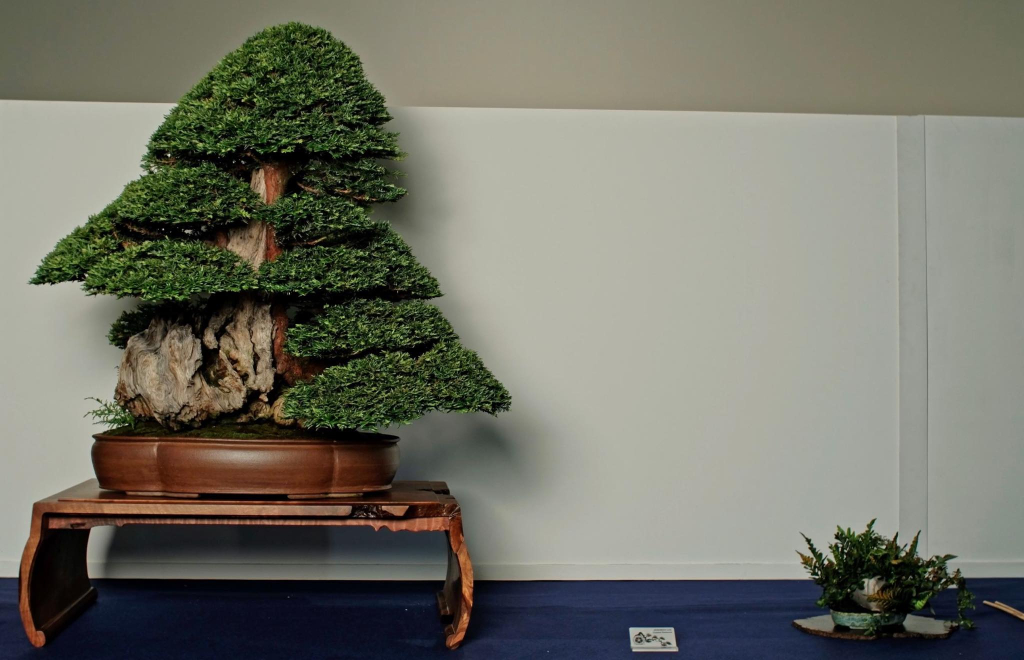
Exhibitor: Jeremiah Lee Tree: California Coast Redwood, Sequoia sempervirens
Jeremiah is a “newer” generation bonsai practitioner of the last 15 years who has intensively built his bonsai skill and collection quality. He has traveled to Japan and has collaborated with many professionals representing a newer era of bonsai work
When I was asked by Ted to take over and become the next exhibit chair, I was hesitant for several reasons. I felt disconnected from the deep history and lineage of early Japanese American teachers and elders. Their journey in bonsai represents one of resourcefulness, pure passion, and community. It was from many of these early members that bonsai in Southern California was able to gain a foothold.
My journey in bonsai only spans the last 12–13 years, so many of these individuals predate my lived experience in the bonsai world. As it became clearer to me that bonsai was my calling, I pursued an apprenticeship in Japan and later transitioned to becoming a full-time bonsai professional. This meant, to me, that in order to practice bonsai at the capacity and ability level I desired, I had to leverage the entirety of myself—quite literally as a way of life both in philosophy and as a means to live. I am grateful for the opportunities I’ve had that have brought me to my current stage in my life.
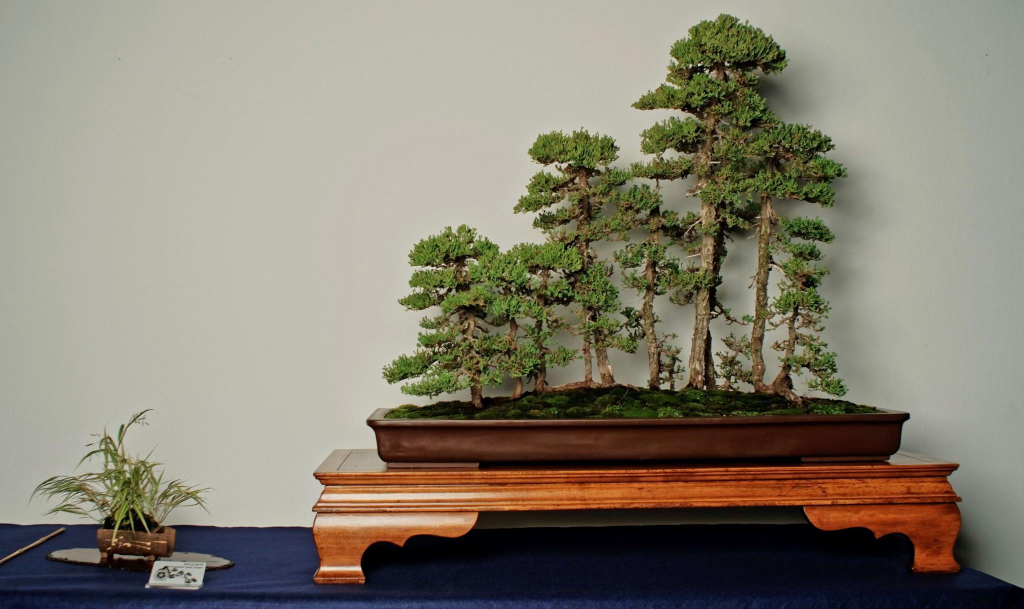
Exhibitor: Doyle Saito Tree: Procumbens juniper
Anyone active in the Southern California bonsai community knows that Doyle is the man. Doyle is the president of the bonsai club, Dai Ichi Bonsai Kai. It’s a great organization, in part from Doyle, that provides a lot of educational resources for the bonsai community. Doyle extremely generous and has helped anyone and everyone who has needed help. He’s been the bridge from past older generations and those practicing bonsai today.
Yet as I intermingled and integrated back into the Southern California community, I felt that my chosen path could be interpreted as slight or disrespectful to the legacy teachers. Those who had selflessly shared their time and value with the community would receive a member who would charge and make a living from the same work.
I bring this up neither as a criticism nor as a sense of remorse but to share the sentiment from my heart with the community at large.
As a bonsai professional, I’ve chosen to dedicate my life to this practice. It has not been an easy path, and I’ve learned many hard lessons along the way. In my early 20s, I left my original career trajectory to pursue a full-time apprenticeship at Fujikawa Kouka-en in Osaka, Japan. After 2 years of dedicated study, I left my apprenticeship. I was a responsible, diligent, and skilled, quickly improving apprentice. My decision then to leave Japan in that early pandemic period was heartbreaking for me and internally conflicting. I almost quit bonsai and didn’t touch trees for a 6-month period.
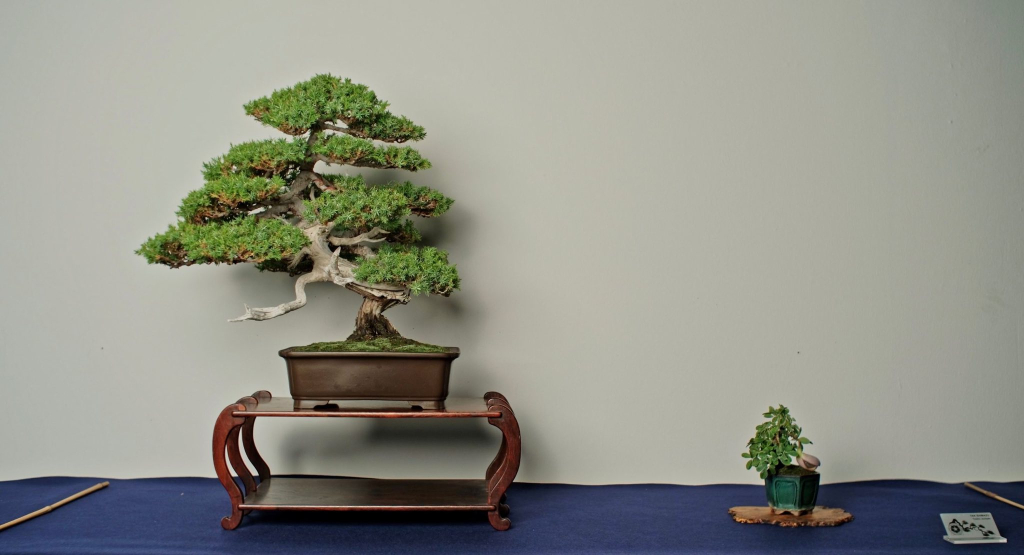
Exhibitor: Tak Shimazu Tree: Needle Juniper “Tosho”
Tak Shimazu is well recognized in the bonsai community for his grafting work on collected junipers and producing trees of a high level of refinement. Tak is a humble, kind individual who has been involved in the community for over 40 years. Tak provided an exhibit that would feel more recognizable to the Japanese community–the accent plant is called “akebi” or chocolate vine which is endemic to Japan and produces a sweet purple fruit
As I later found work in my prior career path and had time to reconcile my feelings, I realized that bonsai was still my ultimate goal and that I did not want to give up on my professional pursuits. Yet I felt highly unqualified and guilty—how dare someone who once gave up on their dreams try to bear the right to pursue them again? I didn’t want to disrespect the notion of being a professional and if I were to be one, it would have to be with the corresponding authenticity, integrity, and ability. I thought to myself that if I was of aptitude and capable of being a real bonsai professional, then what can I do now to bring myself closer to that goal?
Over the pandemic period I was very fortunate to have good friends, mentors, and other professionals who helped me bridge that gap. My professional peers from Japan, Seth Nelson and Michael McTeague, now both certified Nippon Bonsai Association professionals, provided support and encouragement to re-pursue my goal. A recently retired, but also Japanese trained LA based professional John Wang, who can be an eclectic and difficult personality, gave me advice that led me to reconcile my relationship with my Oyakata, Keiichi Fujikawa. And Peter Tea, a Sacramento based Japanese trained professional, has been a professional mentor to me and also enabled me to grow and diversify my skillset. After 3 years of dedicating all my spare time to additional bonsai study, I made the transition to become a full-time bonsai professional and haven’t looked back.
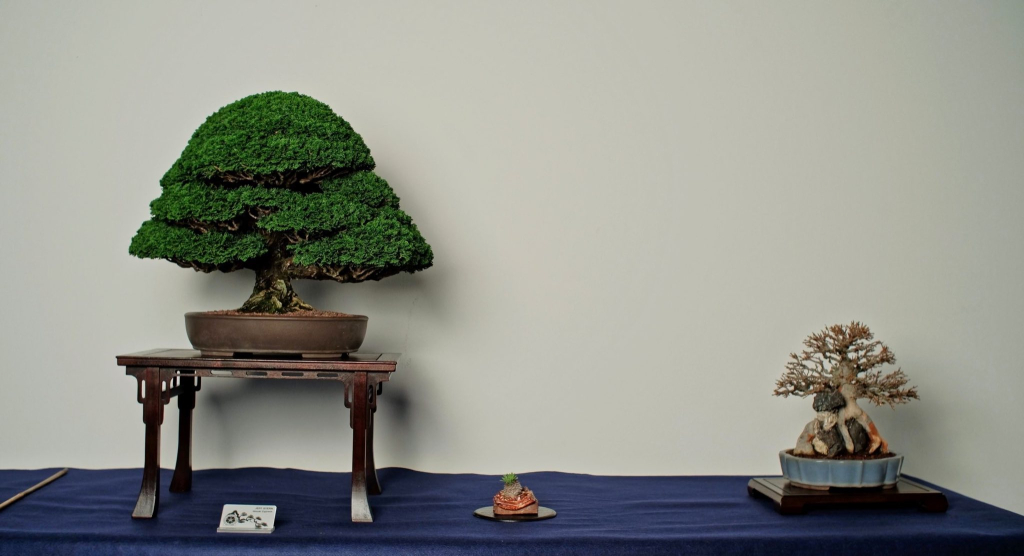
Exhibitor: Jeff Stern Tree: Hinoki Cypress and Trident Maple
Jeff has been engaged with the bonsai community for several decades and has maintained a long continuity of work on his trees with various Japanese trained professionals over the years. These trees which receive both a high degree of horticultural and technical awareness have been able to mature well as bonsai and express a lot of age in their branching.
I am proud of the fact now that while there is still great capacity for me to learn more, I can conduct myself as a professional in the truest sense and produce authentic and great work in the bonsai world. I share this personal story without any preconceived expectation, rather just to share myself with the community for who I am.
In taking over the John Naka exhibit, I wanted to honor the legacy of the past, but also push it to a new level to showcase bonsai at its highest standard. Bonsai, as living trees, have infinite potential to grow and the ability to embody the history of time. It is important to me, in undertaking this exhibit, to provide a free public and community event that embodies these values and showcases excellence in bonsai.
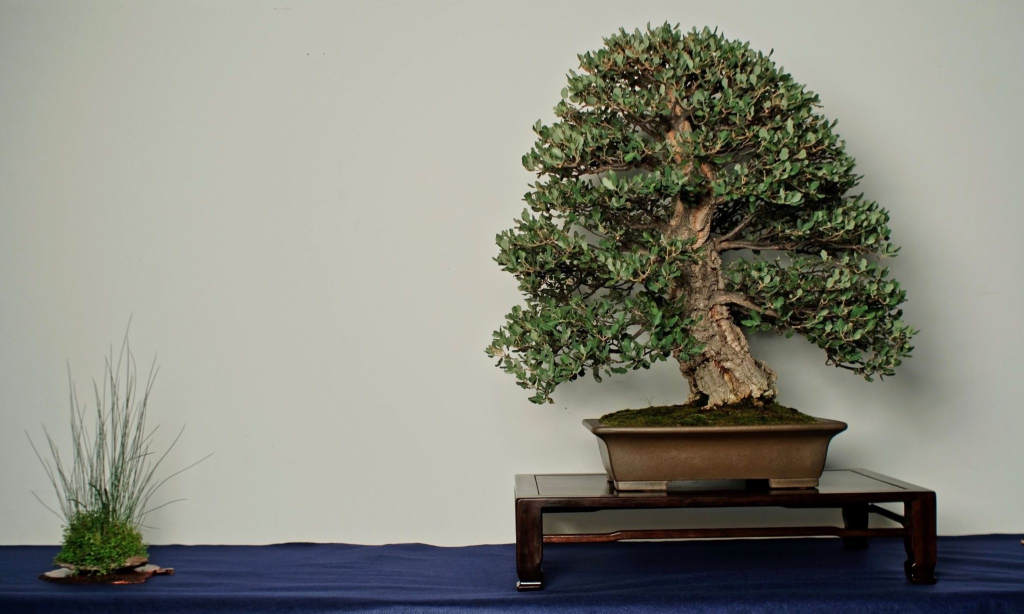
Exhibitor: Michael Roberts Tree: Cork Oak, Quercus Suber
Michael Roberts has been in bonsai for over 30 years. He’s the current president of the GSBF (Golden State Bonsai Federation) org and is an active teacher, exhibitor, and participant of our bonsai community. Many of these trees started from simple nursery material that he’s patiently grown for decades. This cork oak is one such bonsai which represents both patience and diligence in the bonsai art.
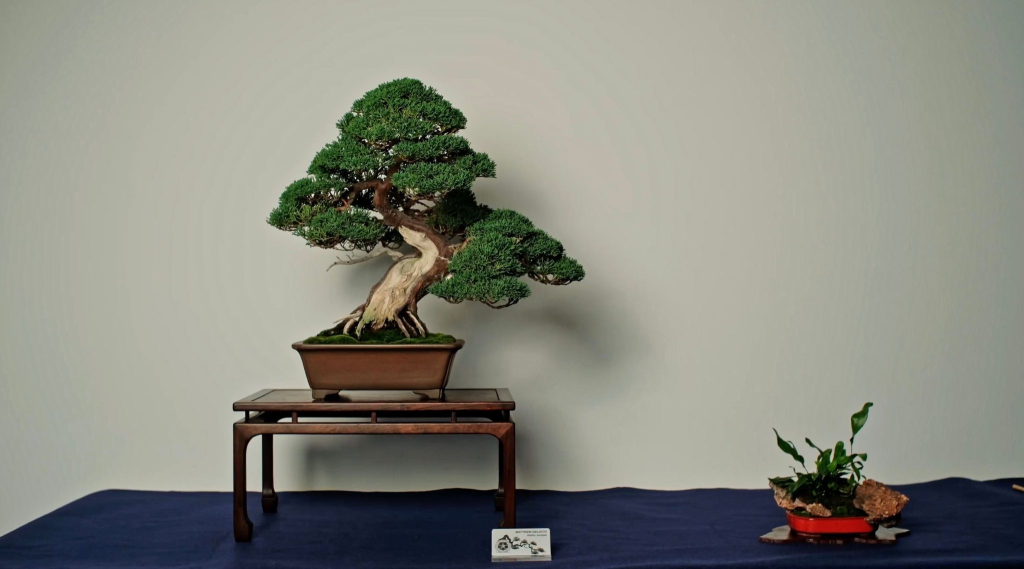
Exhibitor: Matthew Gelacio Tree: San Jose juniper grafted w/juniper chinensis var. kishu
Matthew is one of our great young talents in the Southern California bonsai community who gained interested in bonsai around the COVID pandemic. He became acquainted with Fred Miyahara, another longtime patron and legacy member of our community, who has supported and mentored Matthew. This tree was originally grafted and grown by Fred, who later gave the tree to Matthew. With his passion and quickly developing skill, the tree reached a new level of refinement and quality. It’s another story representing the continuity of bonsai, and the limitless potential for trees to advance.
A successful exhibit was run in August, and we were able to achieve that to some degree. I am very grateful for everyone who participated and helped run the exhibit. This exhibit would not be possible on my own, so I am appreciative of those who support it.
But to continue the legacy and to sustain the event for current and future generations I need help. I am not making any money off this exhibit, nor have I positioned myself to use this exhibit as just a means of self-promotion. Trees are juried in an impartial, objective manner using skilled practitioners or professionals in the community. Within the exhibit we celebrate the legacy of the past as well as community members who’ve invested years of work to bring quality trees to a public venue.
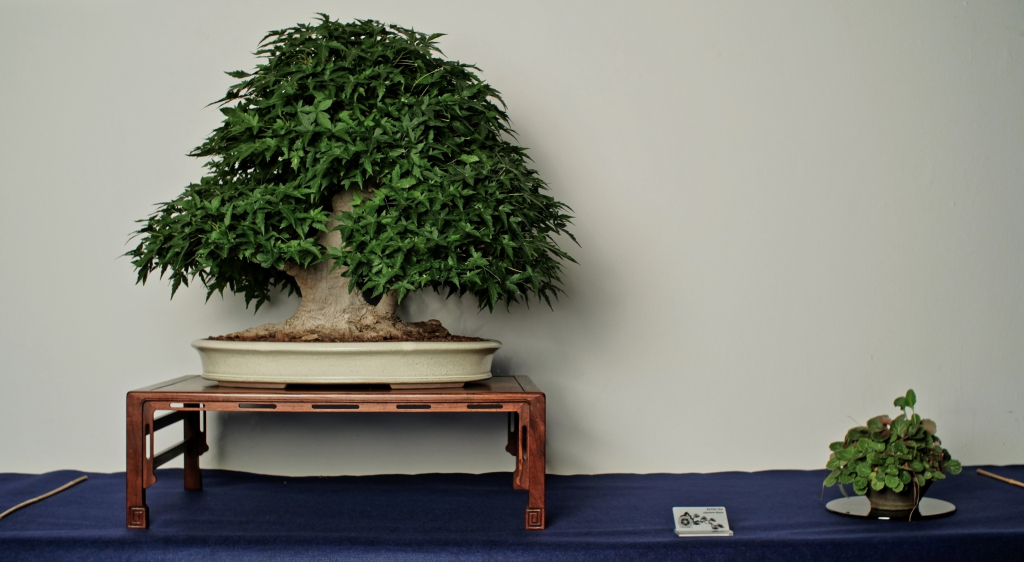
Exhibitor: Peter Tea Tree: Japanese Maple, Acer Palmatum
Peter is a skilled, Japanese trained bonsai professional who did his apprenticeship under Junichiro Tanaka of Aichi-en nursery. Since returning to the US in 2013, he’s operated his business full time. He is well regarded for producing high quality, refined bonsai work and has also provided many educational resources to the American bonsai community. Currently based in Sacramento, we were fortunate to have his participation to help support the show.
While we have been fortunate to receive sponsors who help cover the room rental costs, we are not guaranteed to receive funding in the future. There are recurring expenses for supplies and insurance, and I would like to rent a storage unit to keep display materials in as well.
Beyond that, running this exhibit incurs a significant time expense for me. While I deeply appreciate and love the bonsai community, helping transport, facilitate, and exhibit trees costs me weeks of my time. This is disregarding all the time spent on administrative work and building and maintaining a new exhibit website myself. As a young self-employed individual trying to make it in this world losing weeks of my income is non-insignificant for me. There are a lot of changes in the modern era that necessitate that I work extremely hard for my future ambitions and goals.
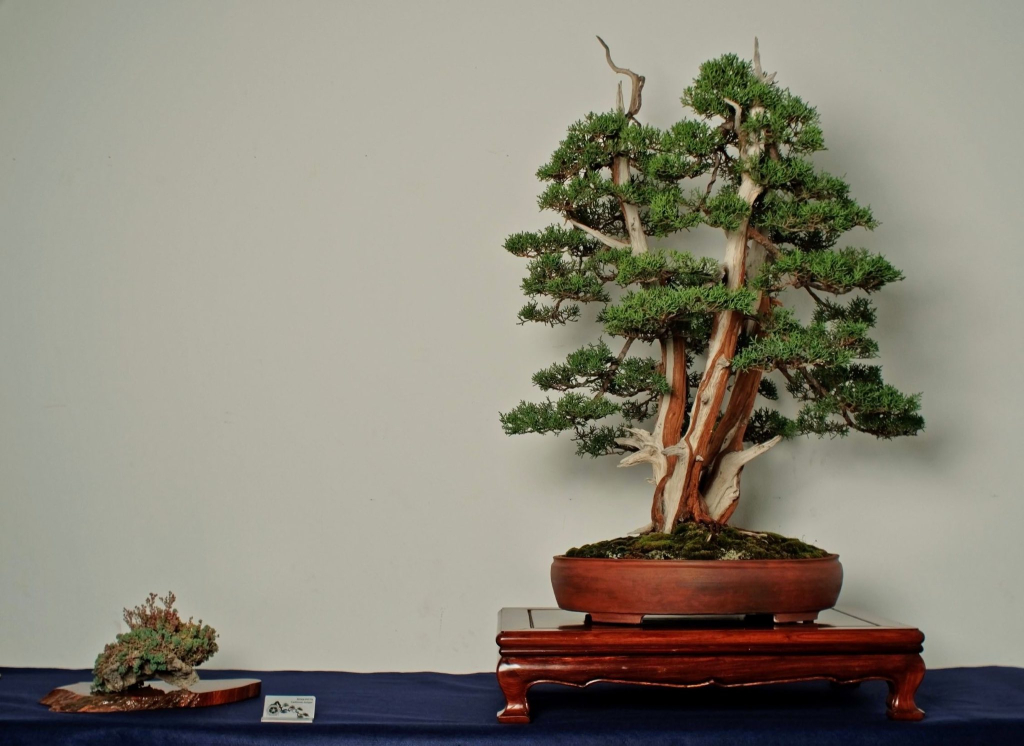
Exhibitor: Ryan Pitts Tree: California Juniper
Ryan is another newer era bonsai practitioner. He initially started studying under David Nguy of “Bonsai Jidai” and has helped run the Chino Bonsai Club as their president. Ryan has been actively engaged within the bonsai community, both producing his own work and volunteering at many events. He is also co-chair of this exhibit and has helped make this event possible. This California juniper is his own original creation, which is an atypical design seen for the species with 3 trunks.
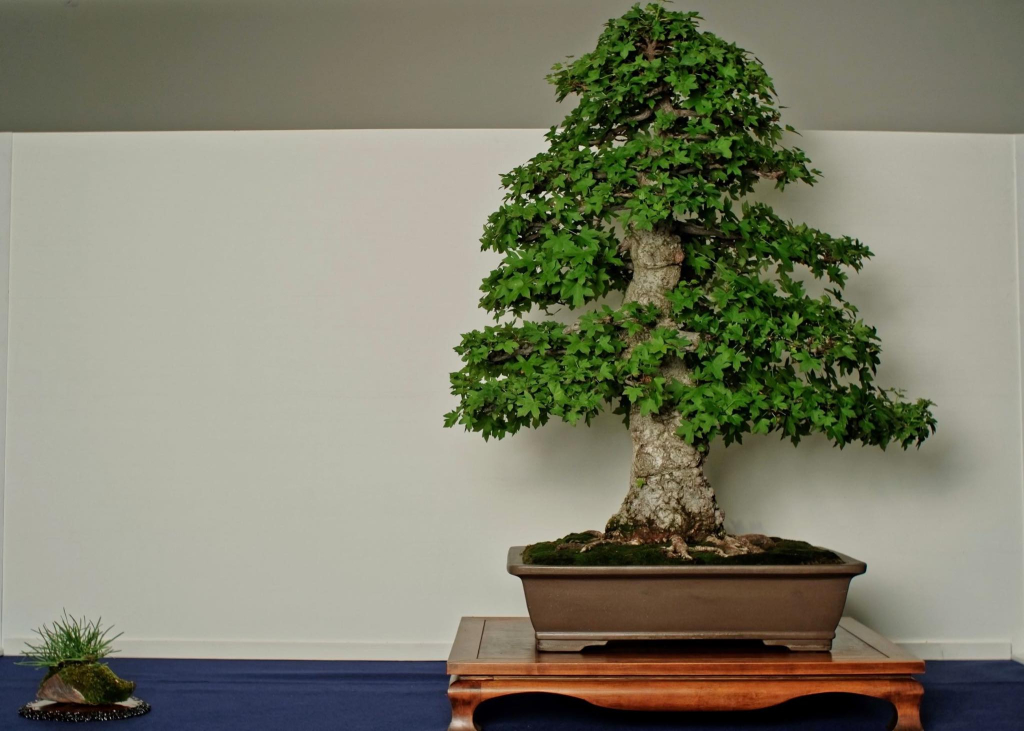
Exhibitor: John Jackson Tree: Oriental Sweet Gum, liquid amber orientalis
John is another longtime member of our bonsai community, practicing bonsai in Southern California for over 50 years. He has been affiliated with the San Diego Bonsai Club and is also the curator of the public collection hosted at the San Diego Zoo Safari Park. I believe this specific tree has been in his development for over 40 years.
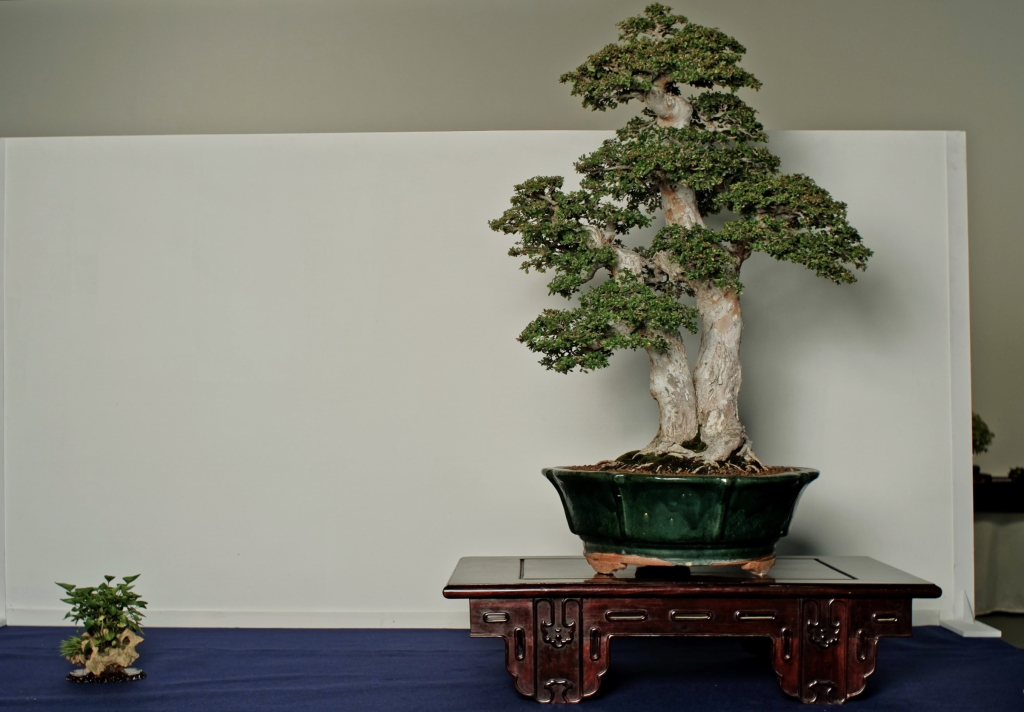
Exhibitor: Che Zhao Sheng Tree: Chinese elm, ulmus parviflora
Mr. Che is the curator of the Chinese penjing collection at the Huntington Gardens. Bonsai and penjing are perhaps more than tangentially related. Although some aesthetic or philosophical expressions may differ, there is a root commonality with the cultivation of trees and the embodiment of time. We are also fortunate in California to have several public bonsai collections, which several of were represented at this exhibit.
To secure a future for this exhibit and to preserve the legacy of the past we need help. I need more members of the community willing to exhibit trees. We had a good mix of community elders and young new exhibitors in August, and I would like to keep that going. I’d love to get more long-time members from the club scene with historic and high-quality trees along with new era practitioners and professionals.
We need volunteers who are willing to assist with some of the logistical burden and can help during the actual event.
Lastly, we need funding to cover the recurring expenses of this exhibit. The room cost is the greatest hurdle which is somewhere around $3000 during the Nisei Week festival weekend. We’ve historically received a private non-profit donation and JACCC has sponsored the remaining cost as well. But uncertain federal and private grant funding in the future makes this not guaranteed. Web hosting and services cost me around $300, insurance $200–400, exhibit media and supplies $100–500, and a proper storage unit would run $300/month. Current donations are insufficient to cover all expenses, and I am not capable of subsidizing the cost myself.

Exhibitor: Julian Tsai Tree: Coast Live Oak, quercus agrifolia
This tree was my own contribution to the show, which is a live oak I’ve been cultivating the last 5 years. The prior owner was my friend, Bob Bugay who passed peacefully a few years ago. This cultivation of this oak has been carried for over 40-50 years, with me being the 3rd or 4th owner. I hope to continue its journey as the current caretaker and will pass it to the next generation when my time is up.
I am looking for sponsors to help cover these expenses. We have a private exhibit account, which I use for donations to cover recurring expenses like insurance, website maintenance, and supplies. But if there are any concerns about fund misuse, you can directly donate to JACCC (a 501(c)(3) nonprofit) on our behalf which can be tax deductible. I will later confirm if JACCC is able to disburse or reimburse funds to me for exhibit use, or if donations would only cover the sponsored expenses for the exhibit. I will provide clarity on funding goals and arrangements later, but if this is something you would be interested in, please contact me.
I am more than willing to support and nurture this historic exhibit to not only preserve the past legacy, but to continually evolve and carry it toward the future. But as a community event, this exhibit needs community support. I need both the old-timers and longtime members of the community as well as the new generation of bonsai practitioners. Together we can nurture the bonsai community and provide an event that draws out excellence and the greatest potential in bonsai. Thank you.
If you are able to support in any way, as a potential exhibitor, volunteer, or donor please contact via the form on my website or at nakamemorialexhibit@gmail.com
https://nakamemorialexhibit.com/
https://nakamemorialexhibit.com/supportus/
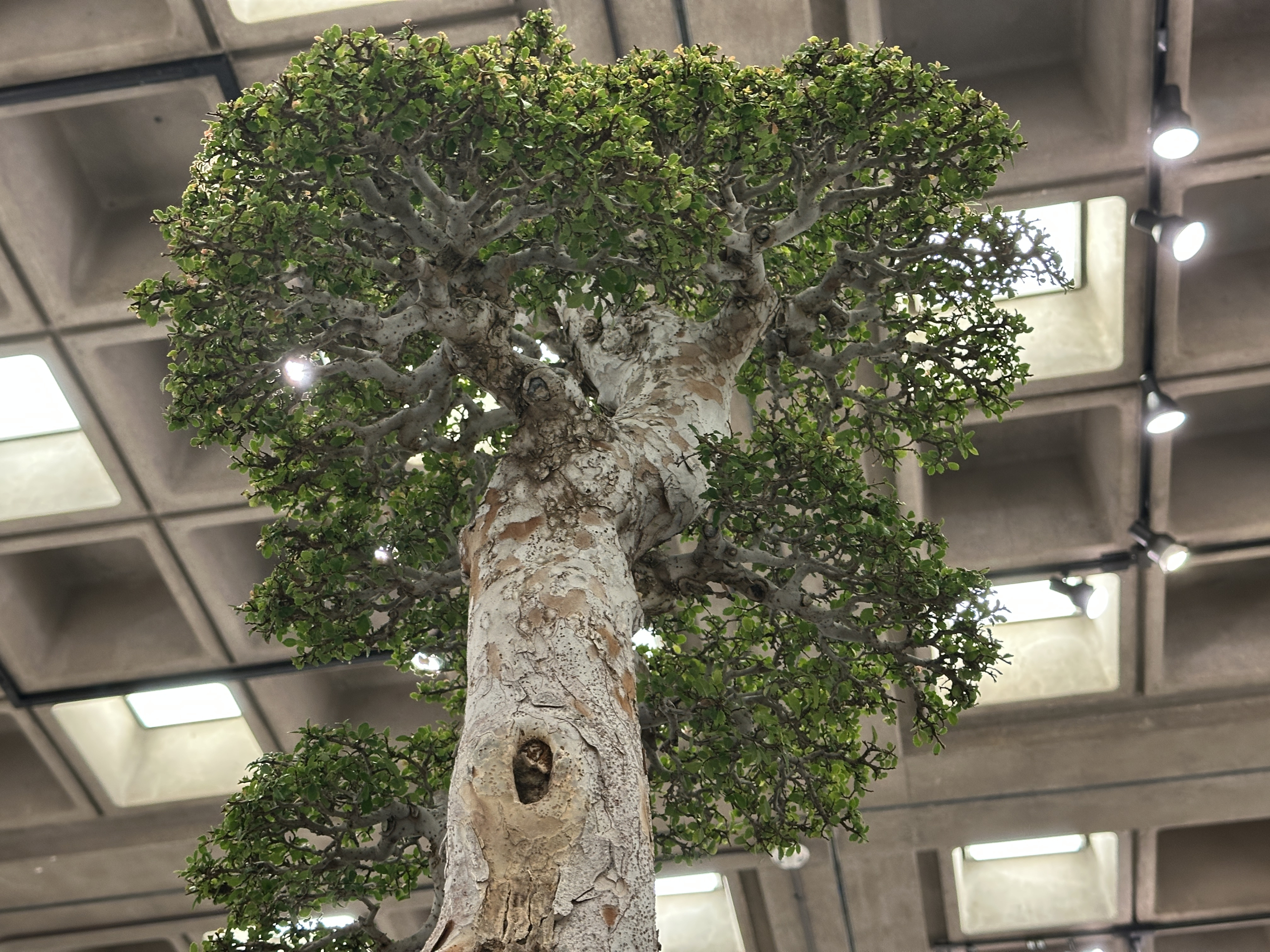



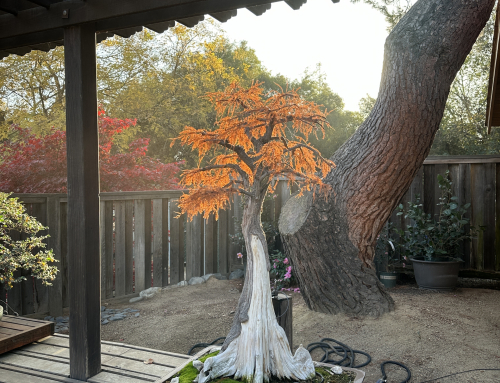
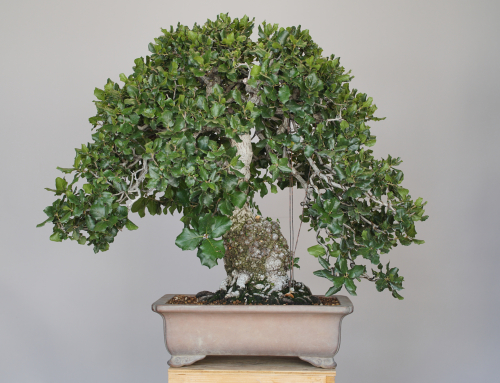
Leave A Comment